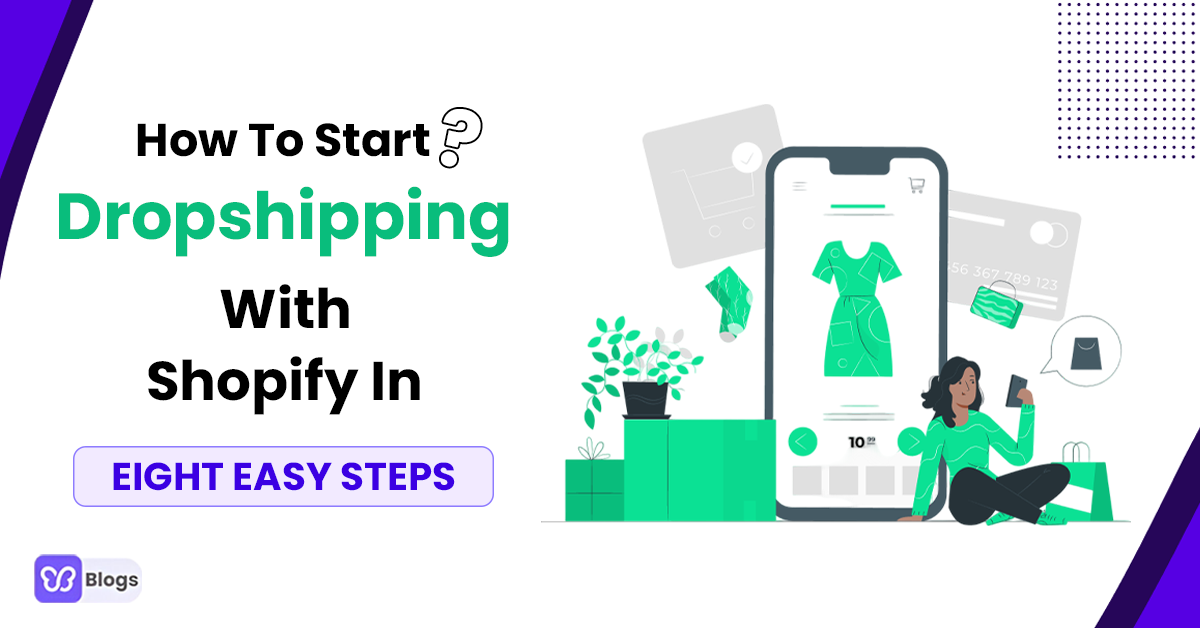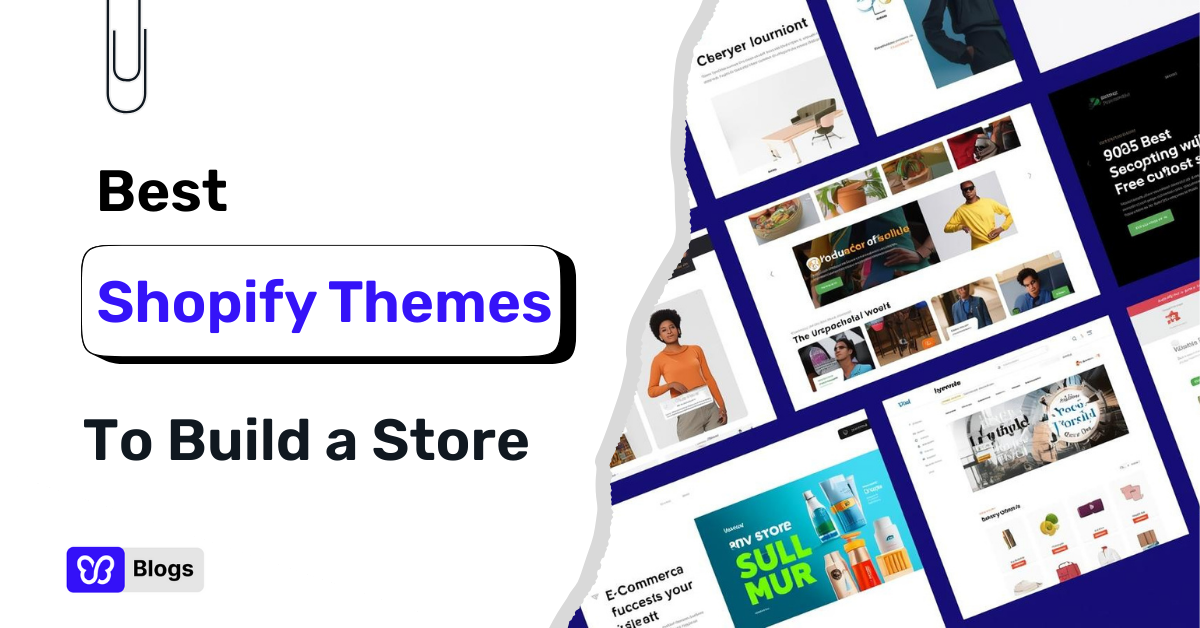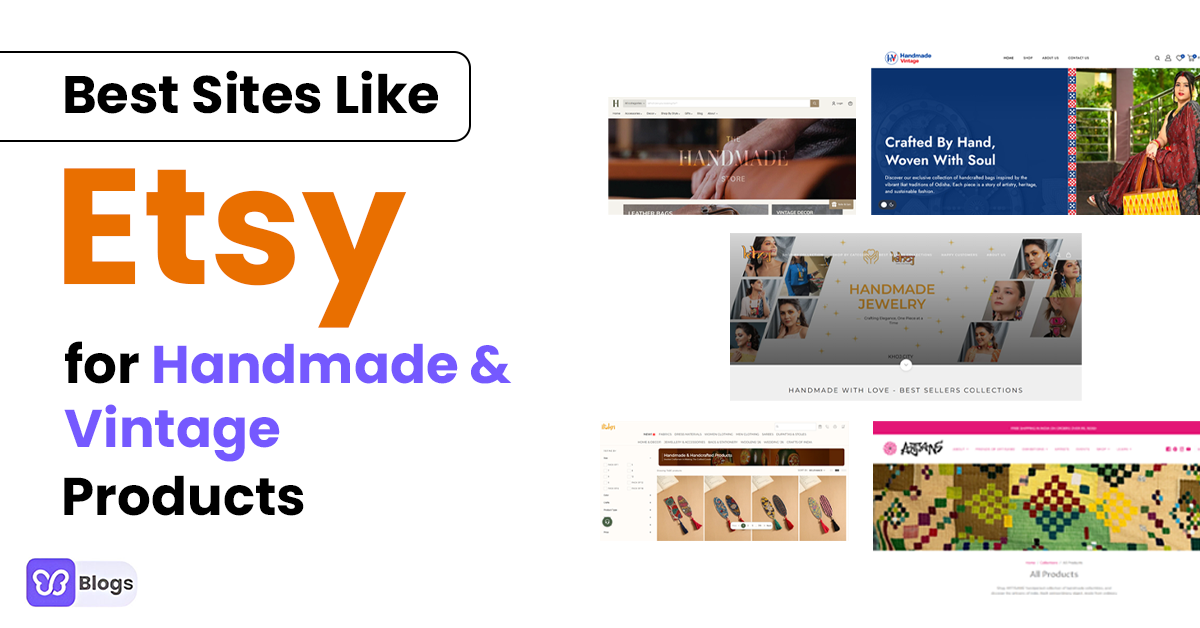Starting an online business in 2025 is easier than you think. Thanks to platforms like Shopify, Big Commerce, and Weebly, anyone with little financial resources can enter the world of e-commerce and start selling.
The dropshipping business model has specifically gained massive momentum in recent years. If you look at the dropshipping store checklist, you'll come to know it doesn't include those typical warehouse and inventory costs. Also, packing and shipping aren't your headaches either.
So yes, if you have limited startup capital yet want to explore different avenues of online selling, dropshipping is just for you.
As we said, building a dropshipping Shopify store isn't hard. Everything, including different themes, apps, and plugins, is already available on the internet. However, knowing what's what and how it impacts your dropshipping store is still crucial for the success and growth of your dropshipping business.
We created this post to help you understand more about how dropshipping works and how to start dropshipping with Shopify. We have also shared a comprehensive dropshipping store checklist to help you build a seven-figure dropshipping store using Shopify.
What Is Dropshipping And How Does It Work?
Dropshipping is a retail fulfillment method where a store doesn't keep the products it sells in stock. Instead, when a customer places an order, the store purchases the item from a third-party supplier (usually a wholesaler or manufacturer) who then ships it directly to the customer.
How it works:
- A customer places an order on your online store.
- You forward the order to your supplier.
- The supplier packages and ships the product directly to the customer.
The seller never handles the product physically, allowing for lower startup costs, minimal inventory risk, and flexible location independence.
For instance, you can source millions of dropshipping products from Oberlo through any popular dropshipping retail website and directly import them to your store within minutes.
When you plan to build a dropshipping store, the only thing you should think about is setting up a website and building a brand. Setting a competitive price that covers shipping and supplier costs is another major concern for dropshipping store owners.
Dropshipping Business Model (Pros & Cons)
According to research, 10%-20% of dropshipping businesses succeed. There is no 'one-size-fits-all' formula applicable when we talk about the dropshipping business model. It all depends on your goals, vision, and the definition of success you have in mind.
For example, if your goal is to generate a $1-million revenue through your Shopify store in a year, it may take you time to achieve that level of success.
But if your goal is to create awareness and have a six-figure turnaround every year, you can achieve your goal by following the right set of strategies.
But to give you a clear understanding of whether dropshipping is worth it or not, we have created this section to highlight the pros and cons of building a dropshipping store in 2024 and beyond.
Dropshipping Business Model - Pros
Lower Capital Requirement
Both brick-and-mortar and online stores require a decent amount of startup capital to set up a store and source products. Apart from that, they also have to bear staffing, inventory management, and supplier costs.
On the other hand, dropshipping doesn't need you to invest heavily at the start. Sure, you have to work on your website to drive traffic, but you don't have to do a lot when it comes to the order processing part.
Ease Of Entry
Anyone can start a dropshipping store at any time without worrying about legal formalities and other prerequisites. All you need to do is build a website, find a Dropshipping supplier, source products, and start selling.
No Need For Storage
Unlike physical stores and other online retail stores, dropshipping Shopify stores doesn't require a warehouse to store products. Not only does it save you lots of money, but you also don't need a staff to handle inventory.
Better Cash Flows
Building a dropshipping store's biggest perk is promoting better cash flows. How? Let us explain.
Usually, retailers order products and sell them when they get them in their stores. But that's not the case when you're selling goods through a dropshipping store.
You only pay your supplier when you receive an order on your site. This frees up cash for other equally essential tasks, such as paid ads, content marketing, and more.
Room For Experimentation
Since the dropshipping business model doesn't involve a lot of upfront investment, it enables you to be creative with your ideas. With drop shipping, you can experiment with innovative product ideas, which isn't possible when working with a traditional retail model.
Dropshipping Business Model - Cons
Aggressive Competition
As discussed above, anyone can start a dropshipping store at any time to generate a stream of passive income for themselves. While it is beneficial, it also acts as a hurdle when you have to face aggressive competition in your field of specialization.
Your role as a seller is quite limited when it comes to the dropshipping business model. In other words, you don't have much control over your conversion funnel, as most of the segments are handled by your supplier.
High Shipping Costs
Dropshipping stores usually have many products from different suppliers. That means a buyer will receive multiple packages for the same order. That adds to the delivery costs and may also lead to inconsistent branding and packaging issues.
Why Choose Shopify To Open Your Dropshipping Store?
All ecommerce platforms are powerful and come with their benefits. But when it comes to building a dropshipping store, most entrepreneurs choose to go with Shopify.
Keep reading if you want to know what sets Shopify apart from the other available platforms.
Feature-Rich
Shopify is an amazing platform with loads of user-friendly features for dropshippers. The platform comes with plenty of eye-catching themes and other sales and marketing features that help you promote your products and manage payments.
Dropshipper-Friendly
Shopify exclusively works with many apps, including Oberlo, which helps drop shippers complete their work within minutes. This platform's flexibility is rare in any other e-commerce platform.
Easy To Use
Unlike other ecommerce platforms, such as WordPress, Shopify is easy to use. All you need to do is edit/save changes from the backend, and you can handle almost everything on your own.
Now that you know what the dropshipping business model is and why it's a good idea to use Shopify to set up your dropshipping store, it's time to see what specific steps you should follow to build a Shopify store from scratch.
How To Open Your Dropshipping Store With Shopify In Eight Easy Steps
1. Find Your Dropshipping Niche
The first step to building a dropshipping business is choosing a niche. For this, you have to conduct thorough market research to determine a trending business idea.
Performing market research will also give you an idea about your competitors and how their policies are helping them to drive conversions.
Some of the most popular niche ideas include beauty, health/wellness, gadgets, automobiles, household products, and more. All of these niches also come with their sub-niches. So, the more specific you are, the better.
Selecting one specific dropshipping niche will help you maintain your focus and create targeted strategies to market your products.
2. Choose A Profitable Dropshipping Product
Once you have chosen your niche, the next step is to pick the specific products you're willing to sell. For instance, if your niche is Fashion, you can choose to sell ethnic clothing, plus-size clothing, or more.
The same goes for beauty and household products, pet accessories, and gadgets.
The idea here is to narrow down your options to cater to the needs of a particular target market. Remember, trying to sell everything in your dropshipping store can cause more harm than good for your business.
So stick to specific products and expand your range over time as your business grows.
If you decide to dropship a single product, check out our post that shows the best one-product Shopify stores to inspire you.
3. Conduct Competitive Research
This is the most critical yet often overlooked step. The ecommerce space is massive. There is every possibility what you're selling is already sold by many other dropshippers online.
Without knowing who your competitors are and what they have in store for your audience, it will become challenging for you to offer something that makes your business stand apart.
A basic Google search will give you an idea of your biggest competitors. Now your goal as an online seller is to outperform them by offering something more valuable for your customers.
You can even check out their websites to analyze data. There are many strategies and ideas you'll find once you start researching your competitors.
4. Choose A Dropshipping Supplier
The success of your dropshipping store depends on your selection of suppliers.
With Shopify, it is easy to find suppliers by linking Oberlo to your dropshipping store. Oberlo is a massive marketplace that makes it easy for dropshippers to find trending products online.
Oberlo enables you to find products with decent profit margins from vendors around the globe and source them to your store with a single click.
What we love about this app is that it automatically forwards orders to the relevant suppliers. That means you no longer have to worry about product packaging and delivery.
5. Set Up Your Collection And Design Your Store
Once you have your niche, products, and suppliers, it's time to build a dropshipping store officially. Shopify makes it easy for dropshippers to set up a feature-rich and user-friendly dropshipping store.
To spice things up, you'll need a theme like Debutify to enhance everything you have in your store.
Debutify allows you to include product listings, pop-ups, and many other features that improve the functionality of your store.
6. Create Unique Descriptions
The biggest mistake dropshipping store owners make is copying/pasting descriptions from their suppliers. Since suppliers work with many dropshippers at once, having unique content on your site gives you an edge over your competitors.
Shopify also allows you to edit the meta titles and meta descriptions of your product pages. Working on these areas will improve your search engine rankings and help your site appear better on SERPs.
You can also showcase user-generated content in the form of reviews/testimonials as it improves your site's credibility. Having videos demonstrating the use of products is also a good idea as it will help buyers know the true benefits of your products.
7. Market Your Dropshipping Store
Congratulations! You have successfully set up your dropshipping store.
What's next? It's time to market your products. There are many ways you can promote your store online.
For instance, you can use paid ads or influencer marketing tactics to support your marketing efforts. In addition to that, you can also promote your site within local communities or through mobile or content marketing.
However, marketing is a time-consuming process. So be patient and give your strategies enough time to drive results.
8. Analyze Results And Make Changes Accordingly
Having a beautiful dropshipping store doesn't mean the hard work is over. The actual work begins when you're done with building a website and sourcing products.
Spend your time and resources on testing the efficacy of your dropshipping strategies. Track results and make changes accordingly.
Conclusion
Dropshipping business models are profitable and in demand. It's easy to set up a dropshipping store as you don't have to think about buying inventory, managing warehouses, and shipping products.
But your goal, ultimately, is to generate revenue. In essence, understanding what makes a good dropshipping product is crucial for success when starting a dropshipping store with Shopify in 2025. Incorporating effective selling and dropshipping marketing tactics can pave the way for a thriving online business. If you have any further inquiries, feel free to share them below, and we'll provide prompt assistance.




